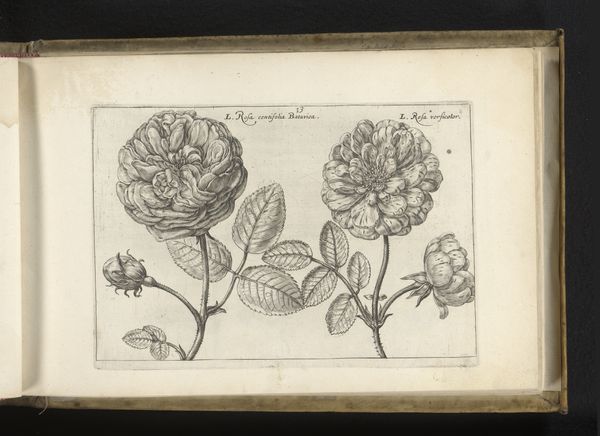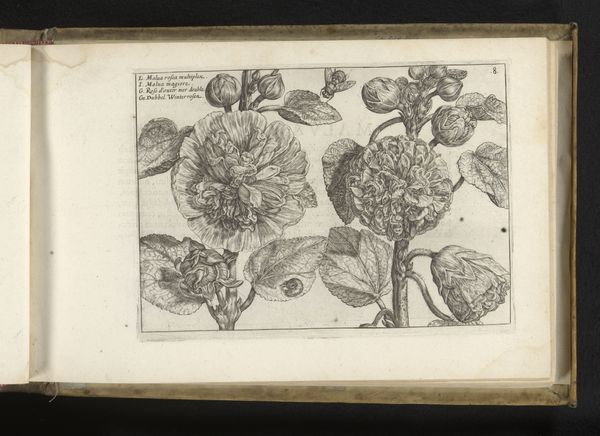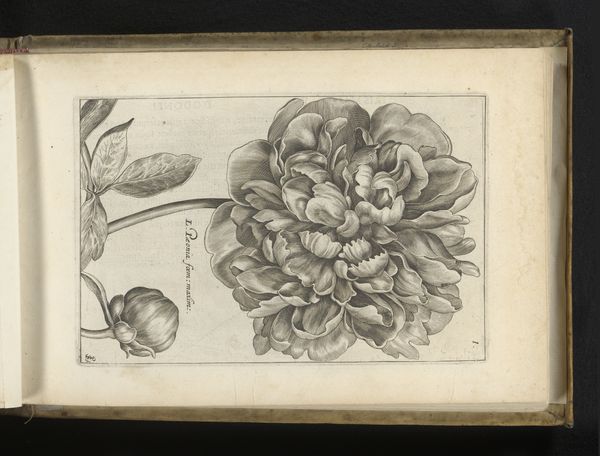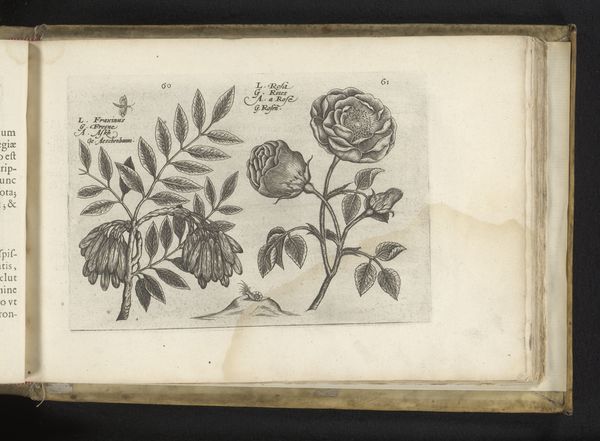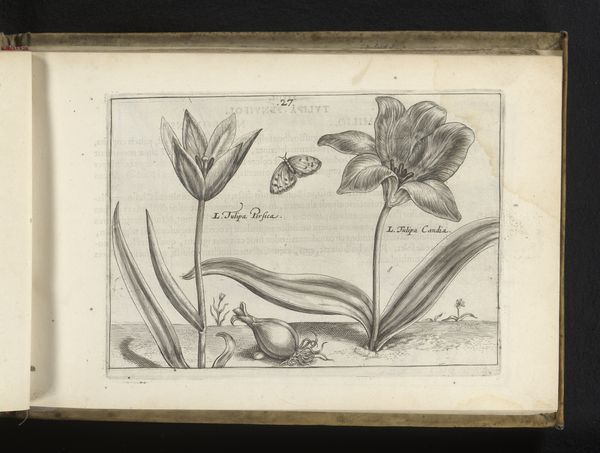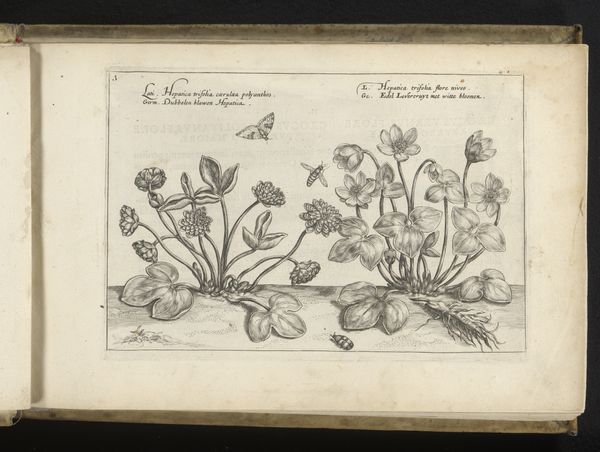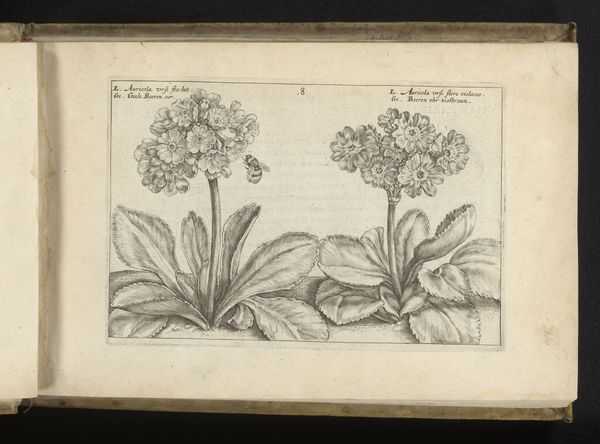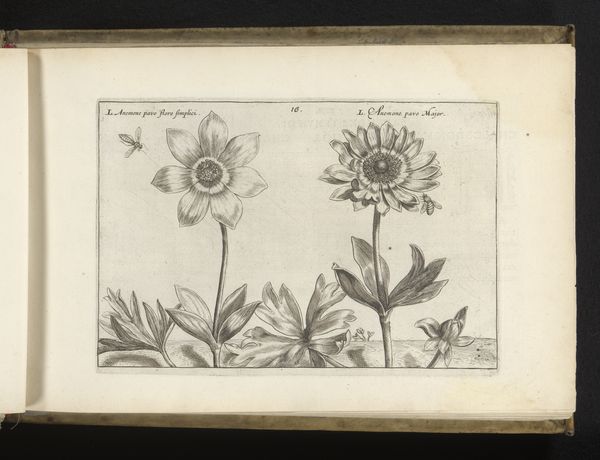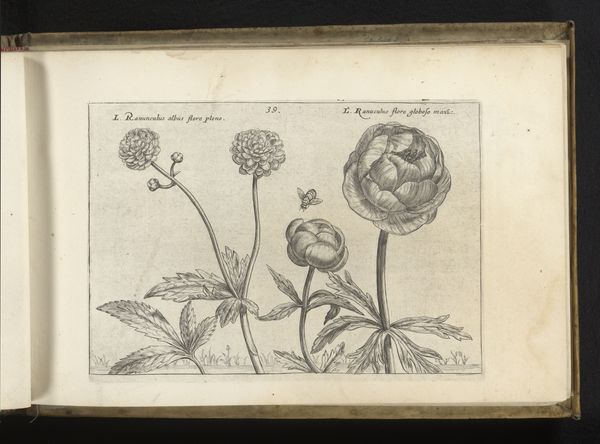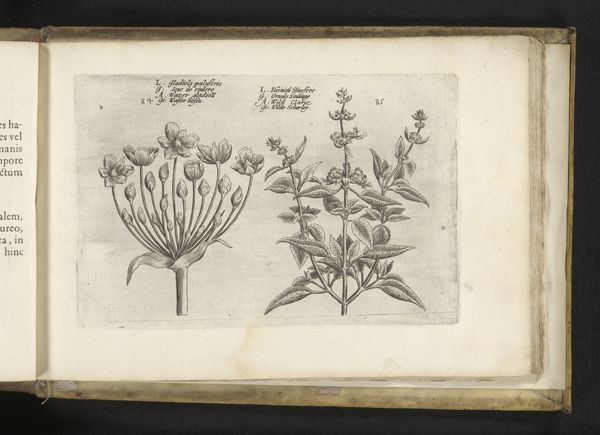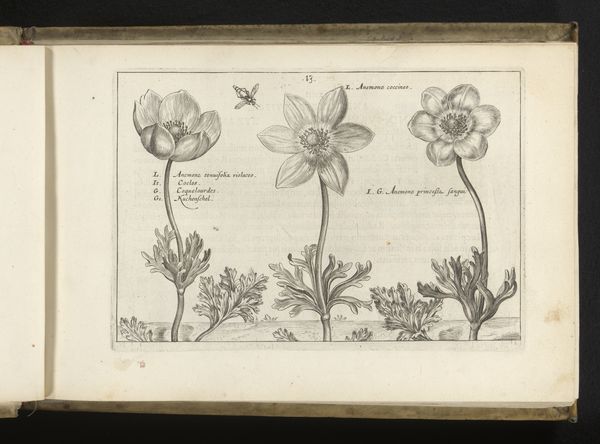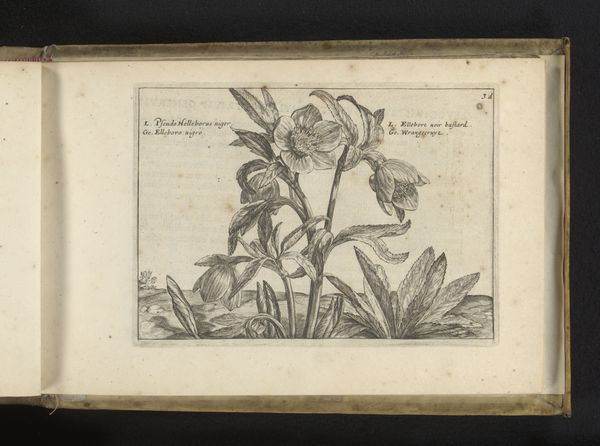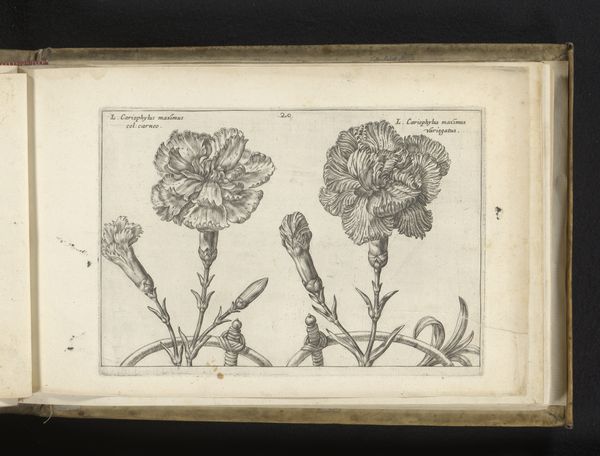
drawing, print, engraving
#
drawing
#
baroque
#
dutch-golden-age
# print
#
figuration
#
pen-ink sketch
#
line
#
engraving
#
realism
Dimensions: height 145 mm, width 215 mm
Copyright: Rijks Museum: Open Domain
Editor: Here we have "Twee rozensoorten", or "Two Types of Roses," a 1617 drawing by Crispijn van de Passe the Younger, currently held in the Rijksmuseum. It’s quite detailed, almost scientific in its precision, but rendered in a delicate engraving style. What do you see in this work? Curator: I'm immediately drawn to the materiality of the printmaking process itself. The lines, meticulously etched, speak to a skilled artisan navigating the demands of reproduction. It wasn't just about representing the roses, but about crafting an object for wider circulation. Consider who would have commissioned this, who bought it, and how they used it. This object itself tells a story of knowledge dissemination, where craft, capital, and science intertwine. Were these images destined for a botanical treatise or an emblem book? Editor: That's a good point. It doesn't seem purely artistic. It feels more utilitarian somehow. Curator: Exactly! It raises interesting questions about the separation between art, craft, and science during this period. Where does one draw the line? Consider the paper too—where was it sourced, who produced it? How does its materiality impact the longevity and interpretation of the image? These considerations situate the roses within a complex web of labor and commerce. Editor: So you're saying the process of creation and its place within a network of makers and consumers, is really the focus, even more so than the beauty of the roses? Curator: Precisely. This print illuminates how art isn't solely about aesthetics; it's intrinsically linked to the social and economic conditions of its making and circulation. This impacts the roses as an art object and what it comes to mean over time. Editor: I never really thought about that level of context before. It’s fascinating how a seemingly simple image can reveal so much about the world it came from. Curator: Indeed. Focusing on materials and processes brings these historical contexts alive. We need to remember that what's on display is an object that contains more than just what it represents.
Comments
No comments
Be the first to comment and join the conversation on the ultimate creative platform.
